Looking to spruce up your living space? Whether you’re moving into a new home or just want to give your current one a fresh look, interior design ideas can help you create a space that is both functional and beautiful. From the fundamentals of interior design to living room concepts, kitchen design inspirations, bedroom aesthetics, and bathroom elegance, there is no shortage of inspiration when it comes to designing your home.
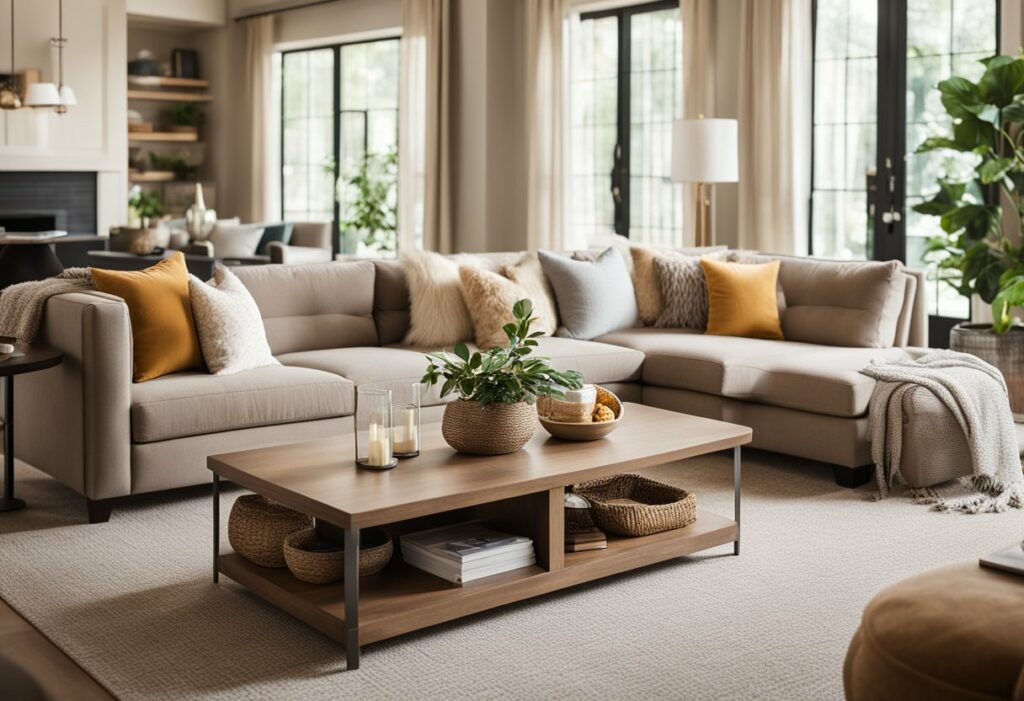
Interior design is all about creating a space that reflects your personality and style. With so many different interior styles and themes to choose from, it can be overwhelming to know where to start. But don’t worry, we’ve got you covered. Whether you prefer minimalist design or something more eclectic, there are plenty of interior design ideas to suit your taste. And if you’re working with a small space, there are also tips and tricks for maximising your space and making it feel more open and inviting.
Personalising your space is also an important aspect of interior design. Whether it’s adding a pop of colour with a statement piece of furniture or incorporating your favourite artwork into your decor, there are plenty of ways to make your home feel uniquely yours. And if you’re looking to make your home more sustainable and low-maintenance, there are also design ideas that can help you achieve this. So why wait? Start exploring these interior design ideas today and create a space that you’ll love coming home to.
Key Takeaways
- Interior design is all about creating a space that reflects your personality and style.
- There are plenty of interior styles and themes to choose from to suit your taste.
- Personalising your space and making it more sustainable are also important aspects of interior design.
Fundamentals of Interior Design
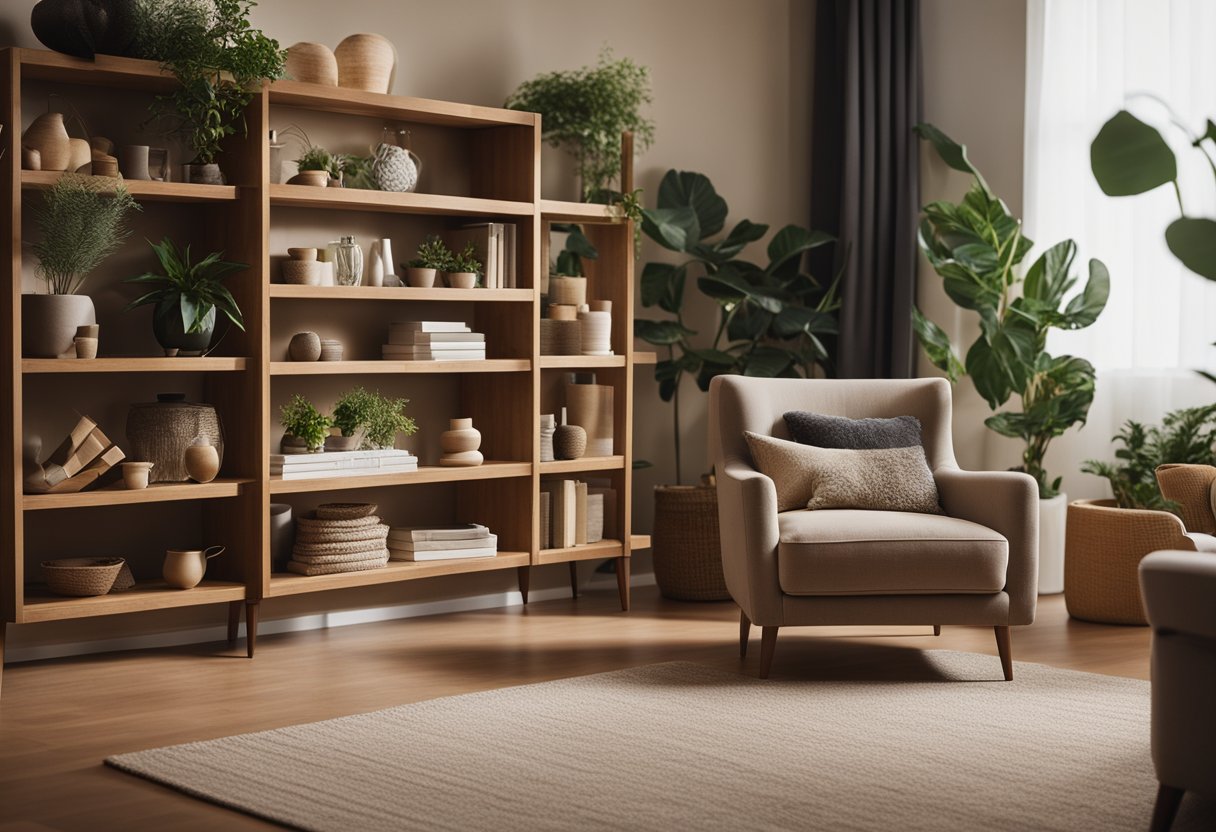
Interior design is an art and science that involves enhancing the interior of a space to create a visually appealing and functional environment. Whether you are decorating your home or office, the fundamentals of interior design are essential to consider. In this section, we will explore the key elements of interior design that you need to know.
Understanding Space and Layout
The first and most important element of interior design is space. Space planning is the foundation of all design ideas. When planning the layout of your space, it is important to consider the function of the room and the flow of traffic. You want to create a space that is both functional and aesthetically pleasing.
One way to create a functional space is by using furniture that is proportional to the size of the room. For example, if you have a small living room, you may want to consider a sofa that is smaller in size. This will help to create more space and make the room feel more open.
The Role of Lighting in Design
Lighting is another crucial element of interior design. It can transform the look and feel of a space. Natural light is ideal, but if your space lacks natural light, you can use artificial lighting to create a warm and inviting atmosphere.
When choosing lighting fixtures, it is important to consider the function of the room. For example, in a bedroom, you may want to consider using soft, warm lighting to create a relaxing atmosphere. In a kitchen, you may want to use bright, white lighting to make the space feel more open and inviting.
Choosing a Colour Scheme
Colour is one of the most important elements of interior design. It can set the mood and tone of a space. When choosing a colour scheme, it is important to consider the function of the room and the overall style you are trying to achieve.
Neutral hues are a popular choice for interior design. They are versatile and can be paired with a variety of different colours. Neutral colours can also make a space feel more open and airy. If you want to add a pop of colour, you can do so with accessories such as pillows, rugs, and artwork.
In conclusion, the fundamentals of interior design are essential to consider when decorating your home or office. Understanding space and layout, the role of lighting, and choosing a colour scheme are key elements that can help you create a functional and visually appealing space.
Living Room Concepts
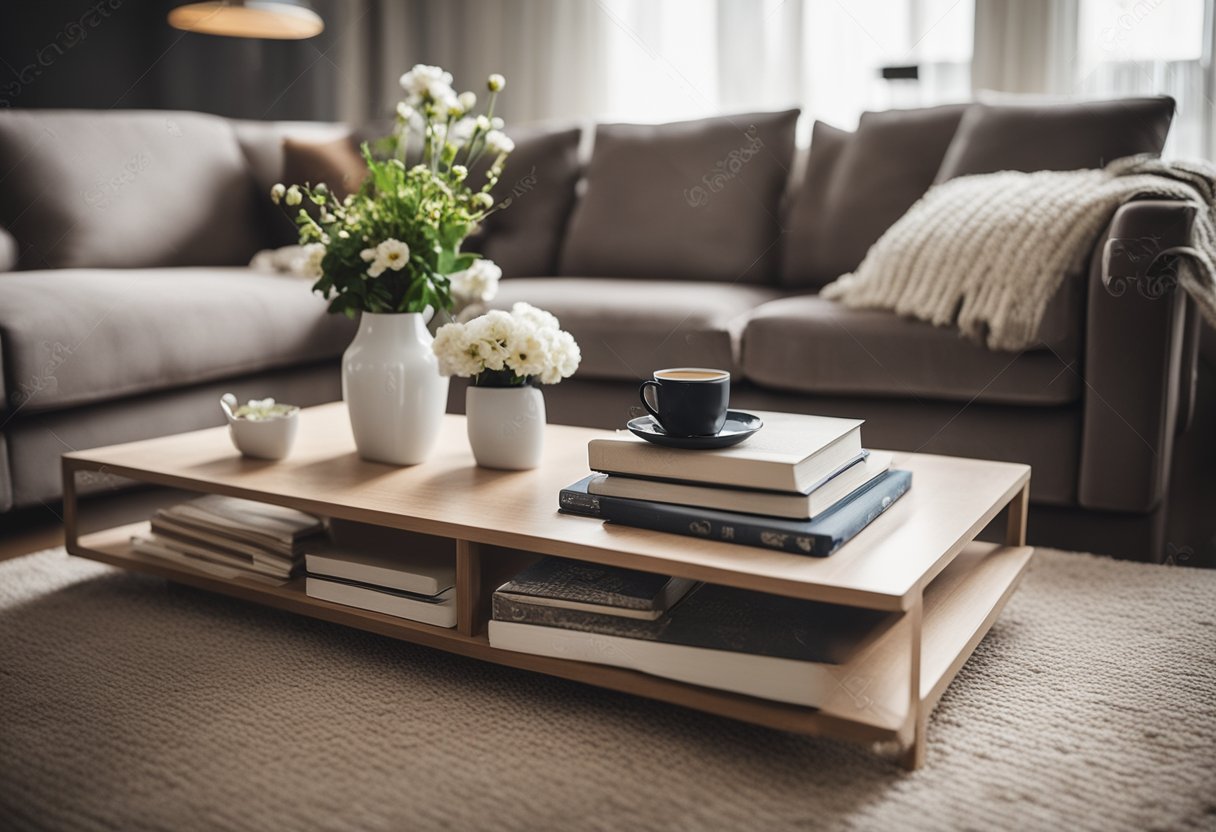
Your living room is the heart of your home, and it’s where you’ll spend most of your time relaxing, entertaining, and unwinding. With the right furniture arrangement, focal points, and lighting, you can create a beautiful and functional living space that reflects your personal style and meets your needs.
Furniture Arrangement
When it comes to arranging furniture in your living room, there are a few things to keep in mind. First, consider the size and shape of your room. If you have a small living room, you may want to opt for a minimalist design with fewer pieces of furniture. On the other hand, if you have a large living room, you can create multiple seating areas to accommodate different activities.
A popular furniture arrangement for a living room is to place the sofa facing the focal point, such as a fireplace or a TV. You can then arrange additional seating around the sofa to create a cozy and inviting space. Don’t be afraid to experiment with different layouts until you find the one that works best for you.
Focal Points and Accessories
Every living room needs a focal point, whether it’s a stunning piece of artwork, a beautiful rug, or a statement piece of furniture. Your focal point should be the first thing that catches your eye when you enter the room, and it should set the tone for the rest of the space.
To complement your focal point, consider adding accessories such as decorative cushions, throws, and curtains. These can help tie the room together and add a pop of colour or texture. You can also incorporate plants and other natural elements to bring life and energy into the space.
Living Room Lighting Options
Lighting is an essential element in any living room, and it can greatly impact the mood and atmosphere of the space. Consider a mix of ambient, task, and accent lighting to create a warm and inviting environment.
Ambient lighting can be achieved with overhead fixtures such as chandeliers or pendant lights, while task lighting can be provided by table lamps or floor lamps. Accent lighting can be used to highlight artwork or other focal points in the room.
With these living room concepts in mind, you can create a space that is both beautiful and functional. Experiment with different furniture arrangements, accessories, and lighting options until you find the perfect combination that suits your style and needs.
Kitchen Design Inspirations
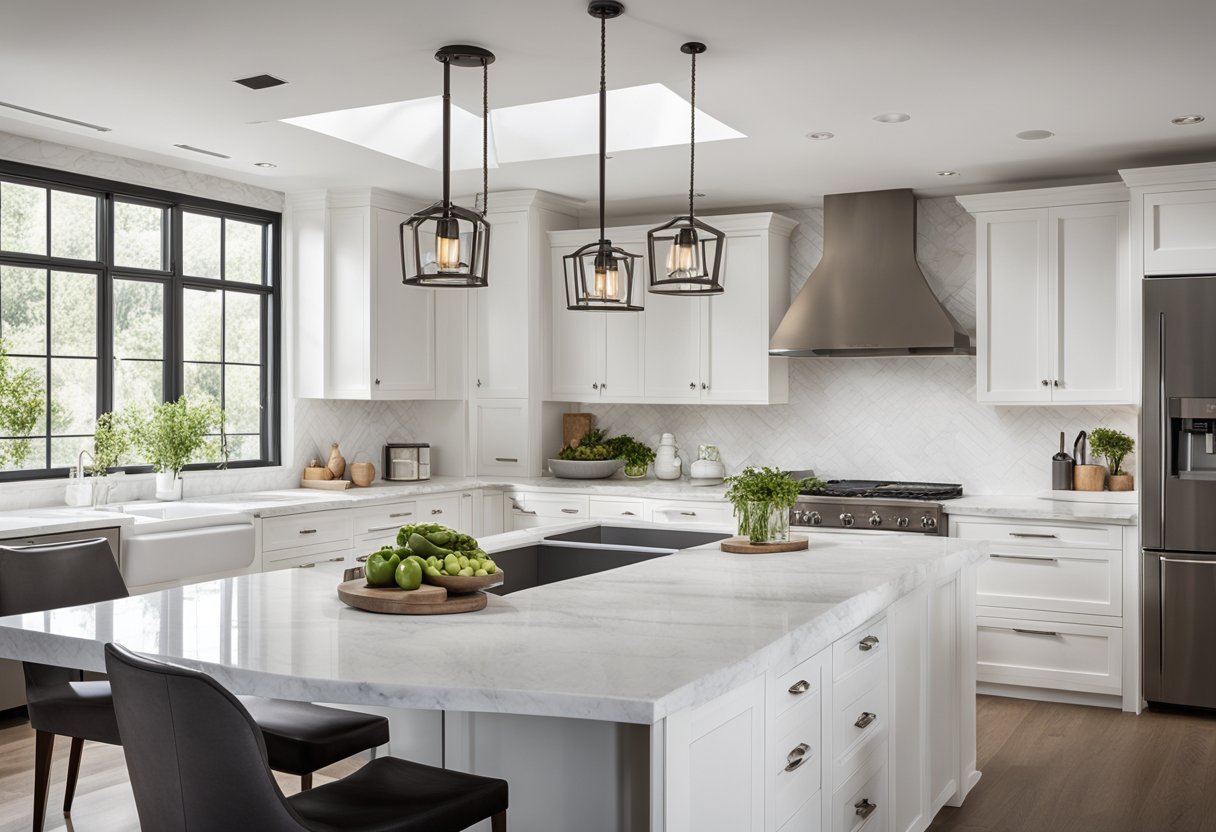
Are you looking to upgrade your kitchen and give it a modern look? Here are some functional and innovative kitchen design ideas that will inspire you to create the kitchen of your dreams.
Functional Kitchen Layouts
The layout of your kitchen is crucial to its functionality. A well-designed layout can make cooking and cleaning a breeze. Consider implementing an L-shaped or U-shaped kitchen layout for maximum efficiency. These layouts allow for ample counter space and easy access to appliances.
Innovative Storage Solutions
Storage is key in any kitchen. Innovative storage solutions can help you keep your kitchen organised and clutter-free. Consider installing pull-out drawers and cabinets for easy access to pots, pans, and utensils. You can also add a pantry cupboard to store dry goods and spices.
Modern Kitchen Appliances
Modern appliances can make cooking and cleaning easier and more efficient. Consider investing in a smart fridge that can keep track of your groceries and suggest recipes based on the ingredients you have. A built-in oven and microwave can save counter space and make cooking a breeze. You can also consider a dishwasher with multiple racks for easy loading and unloading.
When it comes to tiles and patterns, consider using neutral colours for a timeless look. Bold patterns and colours can be overwhelming and may go out of style quickly. Stick to classic designs that will stand the test of time.
With these kitchen design inspirations, you can create a functional and stylish kitchen that you’ll love spending time in.
Bedroom Aesthetics
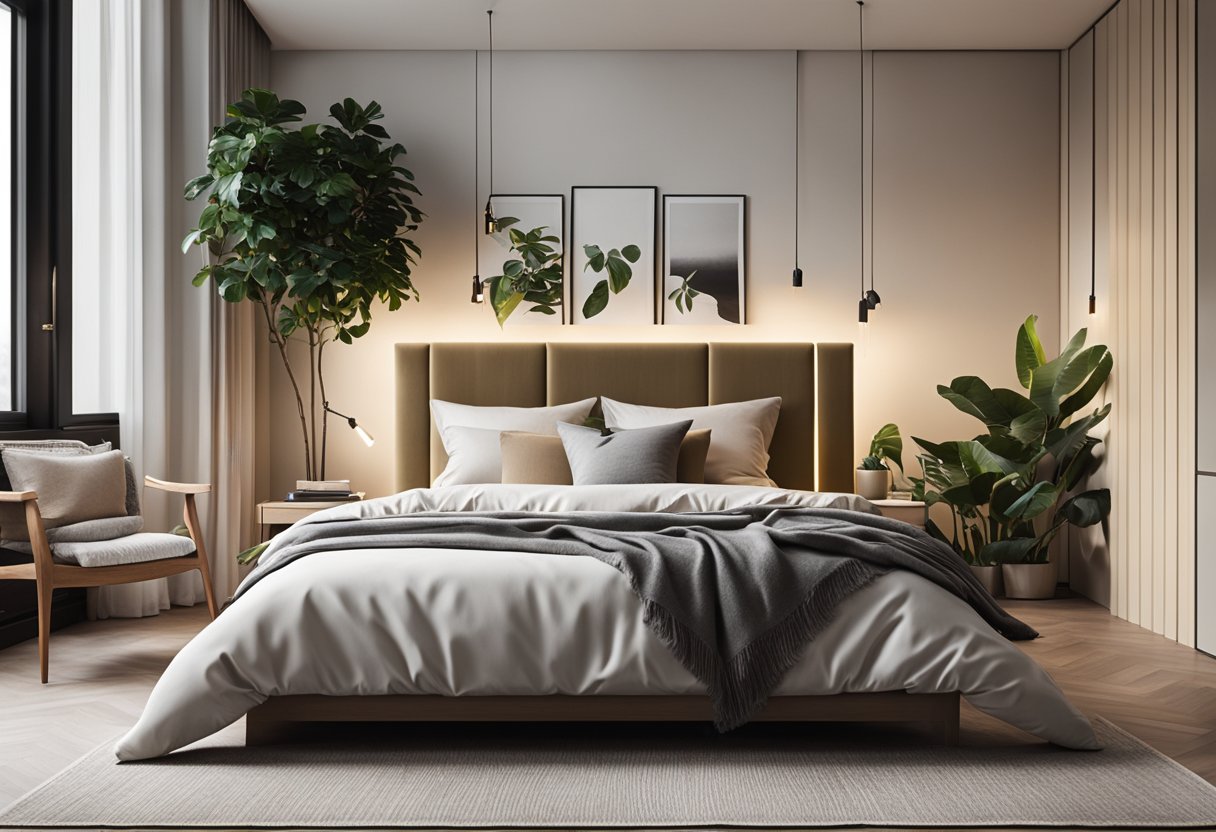
Your bedroom should be a space where you can relax and unwind after a long day. It should also be a reflection of your personal style. Here are some tips on how to maximise both comfort and style in your bedroom.
Maximising Comfort and Style
When it comes to your bedroom, comfort should always be a top priority. Invest in a high-quality mattress and bedding to ensure a good night’s sleep. Don’t forget to add some accent pillows and throws to add texture and warmth to your bed.
In terms of style, choose a colour palette that reflects your personal taste. Whether you prefer bold and bright colours or soft and muted tones, make sure that your bedding, curtains, and accessories all work together to create a cohesive look.
Incorporating Art and Photos
Art and photos are a great way to add personality to your bedroom. Choose pieces that inspire you or make you happy. Hang them on the walls or display them on shelves or dressers.
When choosing art and photos, consider the colours and style of your bedroom. If you have a minimalist bedroom, consider black and white photography or abstract art. If your bedroom has a bohemian vibe, consider colourful prints and patterns.
Lighting for a Relaxing Ambience
Lighting is key when it comes to creating a relaxing ambience in your bedroom. Consider installing a dimmer switch so that you can adjust the lighting to suit your mood. Soft, warm lighting is ideal for creating a cosy atmosphere.
In addition to overhead lighting, consider adding bedside lamps or wall sconces. This will allow you to read or relax in bed without having to get up to turn off the lights.
By following these tips, you can create a bedroom that is both comfortable and stylish. Incorporate art and photos that inspire you, choose a colour palette that reflects your personal taste, and invest in quality bedding and lighting to create a relaxing ambience.
Bathroom Elegance
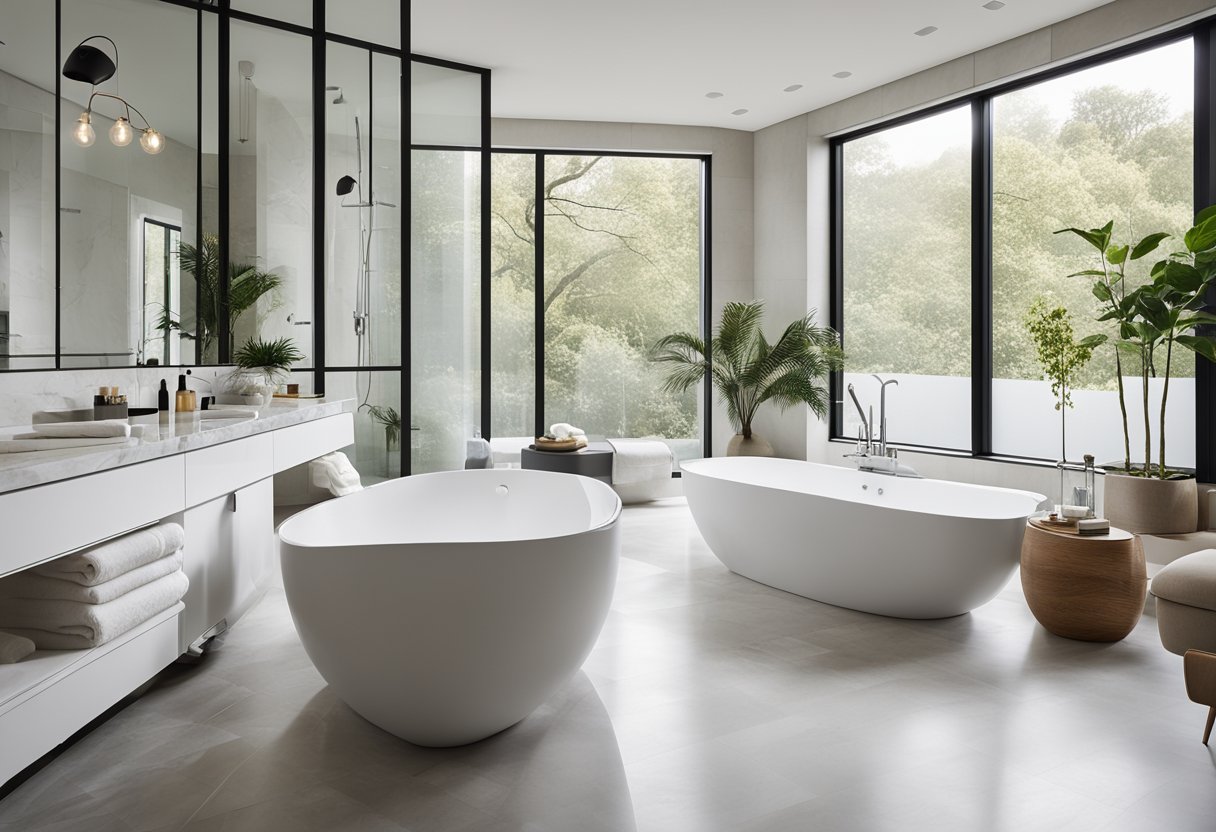
If you want to create a luxurious and elegant bathroom, there are a few key design elements that you should consider. From sophisticated fixtures to creative use of tiles and textures, there are many ways to elevate the look and feel of your bathroom.
Sophisticated Fixtures
One of the easiest ways to add elegance to your bathroom is by incorporating sophisticated fixtures. Consider installing a sleek and modern bathtub or a stylish shower with a rain showerhead. You can also add a touch of glamour with a chandelier or pendant lighting fixture above the bathtub or vanity.
Creative Use of Tiles and Textures
Tiles and textures can add depth and interest to your bathroom design. Consider using natural stone tiles or mosaic tiles in a unique pattern to create a statement wall. You can also play with texture by adding a textured wallpaper or a textured rug.
Efficient Lighting and Space
Efficient lighting and space can also contribute to the overall elegance of your bathroom. Consider installing dimmer switches to create a relaxing atmosphere, and add task lighting around the vanity for practicality. You can also maximize space by installing floating shelves or a built-in storage unit.
Incorporating these design elements into your bathroom will create a luxurious and elegant space that you will love spending time in.
Interior Styles and Themes

When it comes to interior design, there are a variety of styles and themes to choose from. Whether you prefer a contemporary look or a more rustic feel, there is a style to suit your taste and personality. In this section, we will explore some of the most popular interior design styles and themes, including Contemporary Interior Essentials, Scandinavian Design Principles, and Industrial Style Elements.
Contemporary Interior Essentials
Contemporary interior design is all about sleek lines, clean spaces, and minimalism. If you’re looking to create a contemporary feel in your home, there are a few key elements to keep in mind. Start by choosing a neutral colour palette, such as white, grey, or beige. This will create a sense of calm and tranquillity in your space. Next, focus on incorporating natural materials, such as wood and stone, to add warmth to your home. Finally, choose furniture and accessories with simple, clean lines to create a cohesive look.
Scandinavian Design Principles
Scandinavian design is known for its simplicity, functionality, and beauty. This style is all about creating a warm and inviting space, with a focus on natural materials and clean lines. To create a Scandinavian look in your home, start by choosing a neutral colour palette, such as white, grey, or beige. Next, incorporate natural materials, such as wood and wool, to add warmth and texture to your space. Finally, choose furniture and accessories with simple, clean lines to create a cohesive look.
Industrial Style Elements
Industrial style is all about creating a raw, edgy look in your home. This style is inspired by old factories and warehouses, and is characterised by exposed brick, concrete, and metal. To create an industrial look in your home, start by choosing a neutral colour palette, such as black, white, or grey. Next, focus on incorporating natural materials, such as wood and leather, to add warmth and texture to your space. Finally, choose furniture and accessories with a raw, edgy feel to create a cohesive look.
Incorporating natural materials and wood accents into your interior design is a great way to create a warm and inviting space. Whether you prefer a contemporary, Scandinavian, or industrial look, there are plenty of ways to incorporate natural materials into your home. By choosing a neutral colour palette and focusing on clean lines and minimalism, you can create a cohesive look that is both stylish and functional.
Personalising Your Space
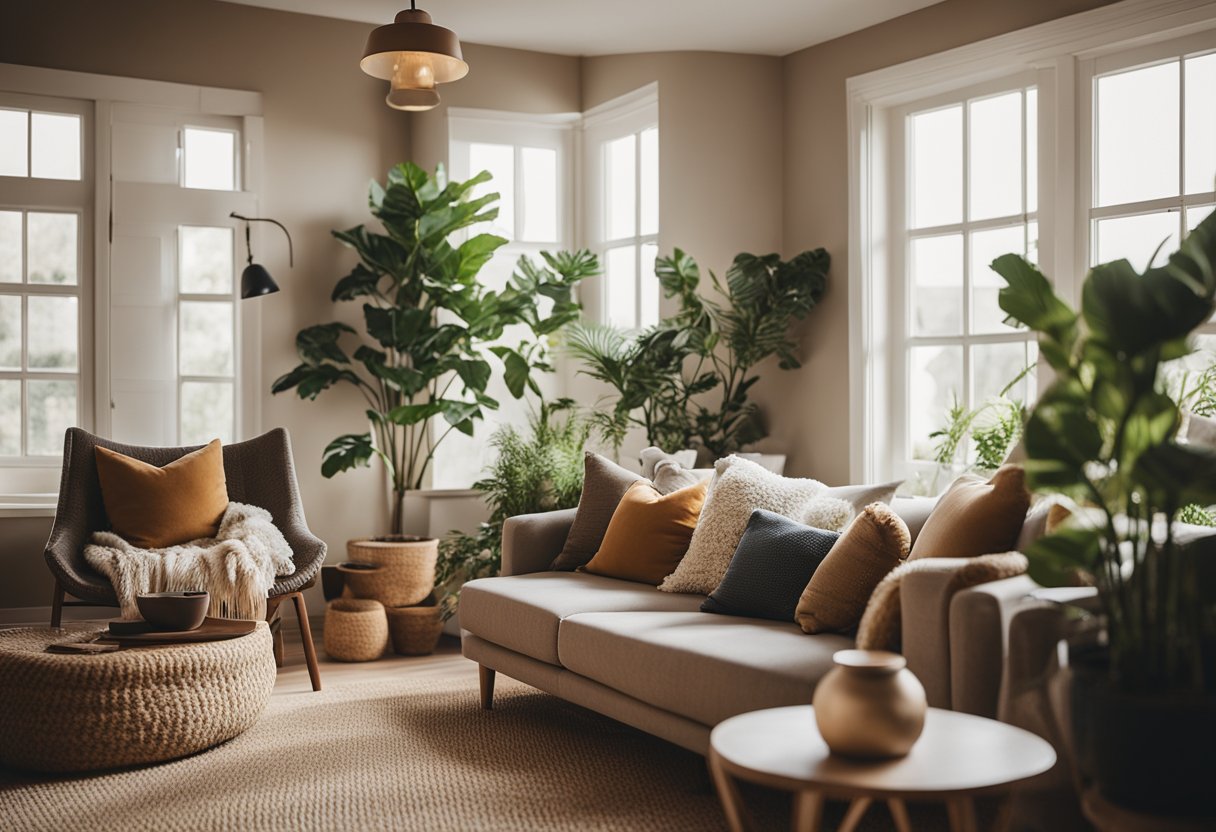
Your home is a reflection of your personality and style. Personalising your space is the perfect way to add character and warmth to your living area. Here are some exciting ideas to help you personalise your space.
Decorations and Art Pieces
Decorations and art pieces are a great way to add personality to your space. Unique and interesting pieces can add character and depth to any room. You can opt for a statement piece such as a large painting or sculpture, or you can create a gallery wall with a collection of smaller pieces.
Incorporating Greenery and Natural Elements
Incorporating greenery and natural elements into your space can add a sense of calm and tranquillity. Plants not only look beautiful but also purify the air and create a healthier living environment. You can add plants to your space in various ways, such as hanging plants, potted plants, or even a vertical garden.
Unique Wall Finishes and Wallpapers
Unique wall finishes and wallpapers can add character and personality to your space. You can opt for a bold and vibrant wallpaper to create a statement wall, or you can experiment with different textures and finishes such as exposed brick or wood panelling.
Personalising your space is an exciting way to make your living area feel more like you. By incorporating decorations, greenery, and unique wall finishes, you can create a space that is not only beautiful but also reflects your personality and style.
Maximising Small Spaces
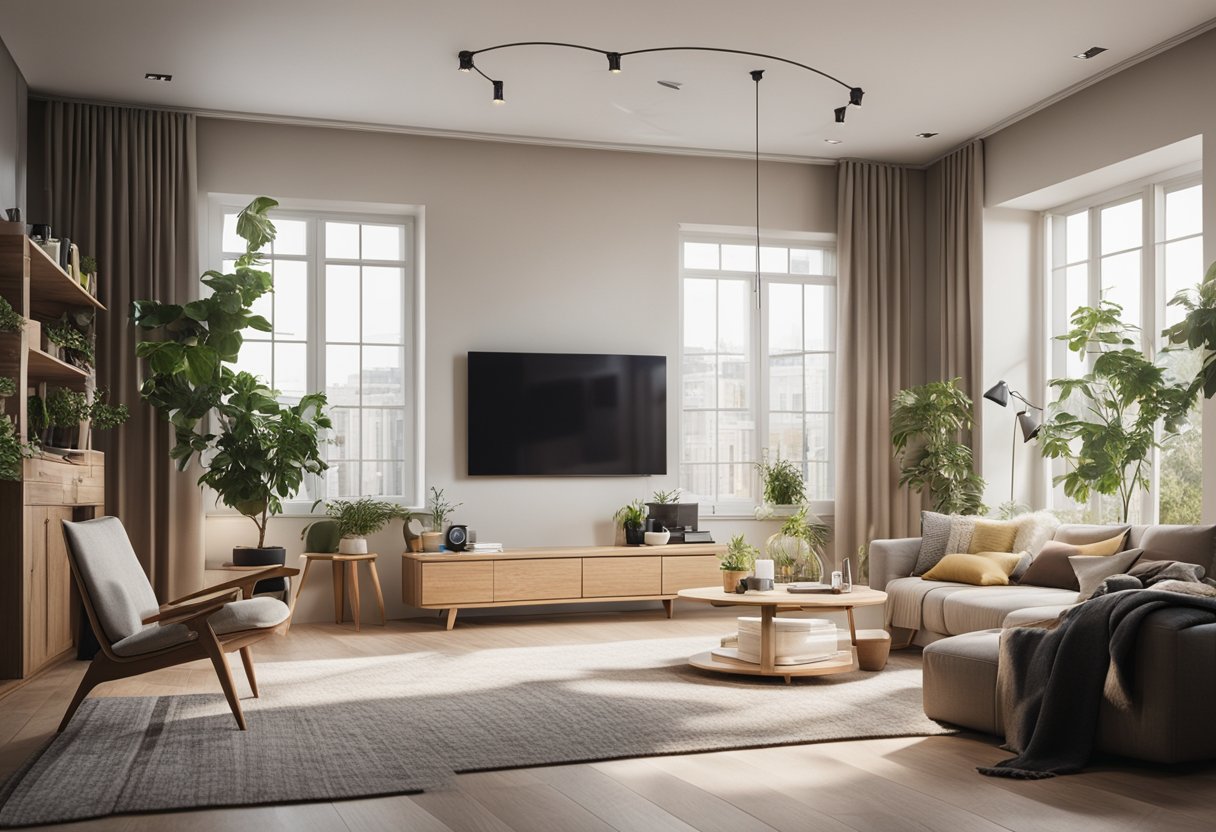
If you live in an HDB or BTO flat, you know how challenging it can be to maximise space. But with the right interior design ideas, you can transform your compact living areas into stylish and functional spaces. Here are some smart ideas to help you maximise your small space.
Smart Furniture for Compact Living
One of the most important things to consider when designing a small space is furniture. To maximise space, opt for multifunctional furniture pieces that serve dual purposes. For example, a sofa bed can be used as a couch during the day and as a bed at night. A storage ottoman can be used as a seat, a footrest, and storage space.
Strategic Design for HDB and BTO Flats
When designing your HDB or BTO flat, it’s important to think strategically. Consider using built-in storage solutions to maximise space. For example, built-in wardrobes can help you save space in your bedroom. You can also use vertical space to your advantage by installing shelves and cabinets.
Open-Plan Concepts and Sliding Doors
Open-plan concepts are a great way to maximise space in your HDB or BTO flat. By removing walls, you can create a more spacious and airy feel. However, it’s important to consider privacy. Sliding doors are a great way to separate spaces without taking up too much room. You can also use curtains or room dividers to create a sense of privacy.
In summary, maximising small spaces is all about being strategic and creative. By using smart furniture, strategic design, and open-plan concepts, you can transform your small space into a stylish and functional living area.
Sustainable and Low-Maintenance Design
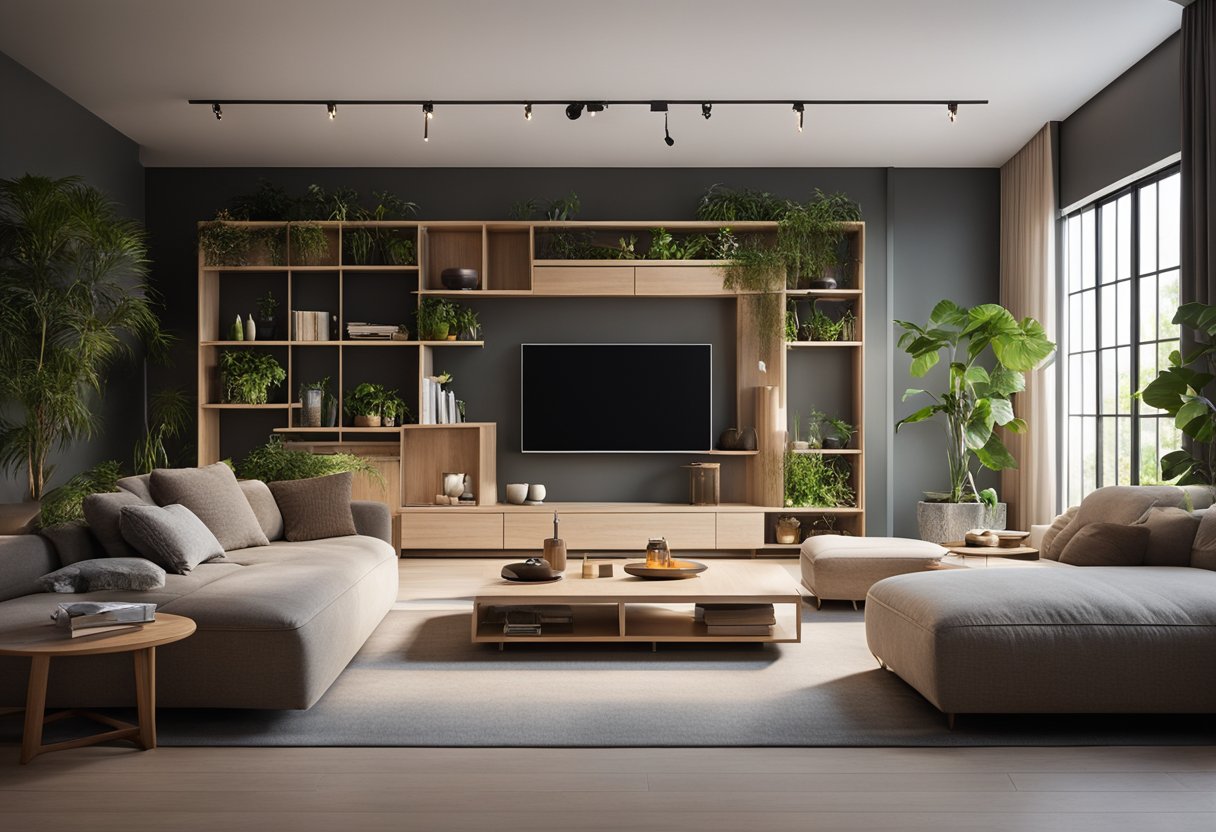
Creating an eco-friendly and sustainable home is not only great for the environment but also for your wallet. By using natural materials and designs that are easy to maintain, you can save money on energy bills and reduce your carbon footprint. Here are some ideas for creating a sustainable and low-maintenance home.
Eco-Friendly Materials and Finishes
Using natural materials such as bamboo, cork, and reclaimed wood for flooring and furniture can reduce the amount of harmful chemicals in your home. These materials are also durable and long-lasting, reducing the need for replacement. When choosing finishes, look for low-VOC (volatile organic compounds) paints and stains that are safer for you and the environment.
Designs for Easy Upkeep
Designing your home with low-maintenance features can save you time and money. For example, using tiles instead of carpet can make cleaning easier and prevent the buildup of allergens. Incorporating storage solutions can also reduce clutter and make cleaning a breeze. Additionally, choosing furniture with removable and washable covers can make upkeep a breeze.
Energy-Efficient Appliances and Lighting
Energy-efficient appliances and lighting can reduce your energy bills and help the environment. Look for appliances with an Energy Star rating, which means they meet strict energy efficiency guidelines set by the government. LED lighting is also a great option as it uses less energy and lasts longer than traditional bulbs.
By incorporating sustainable and low-maintenance designs into your home, you can create a comfortable and eco-friendly living space. Not only will you be doing your part for the environment, but you’ll also save money in the long run.
Home Office and Dedicated Areas
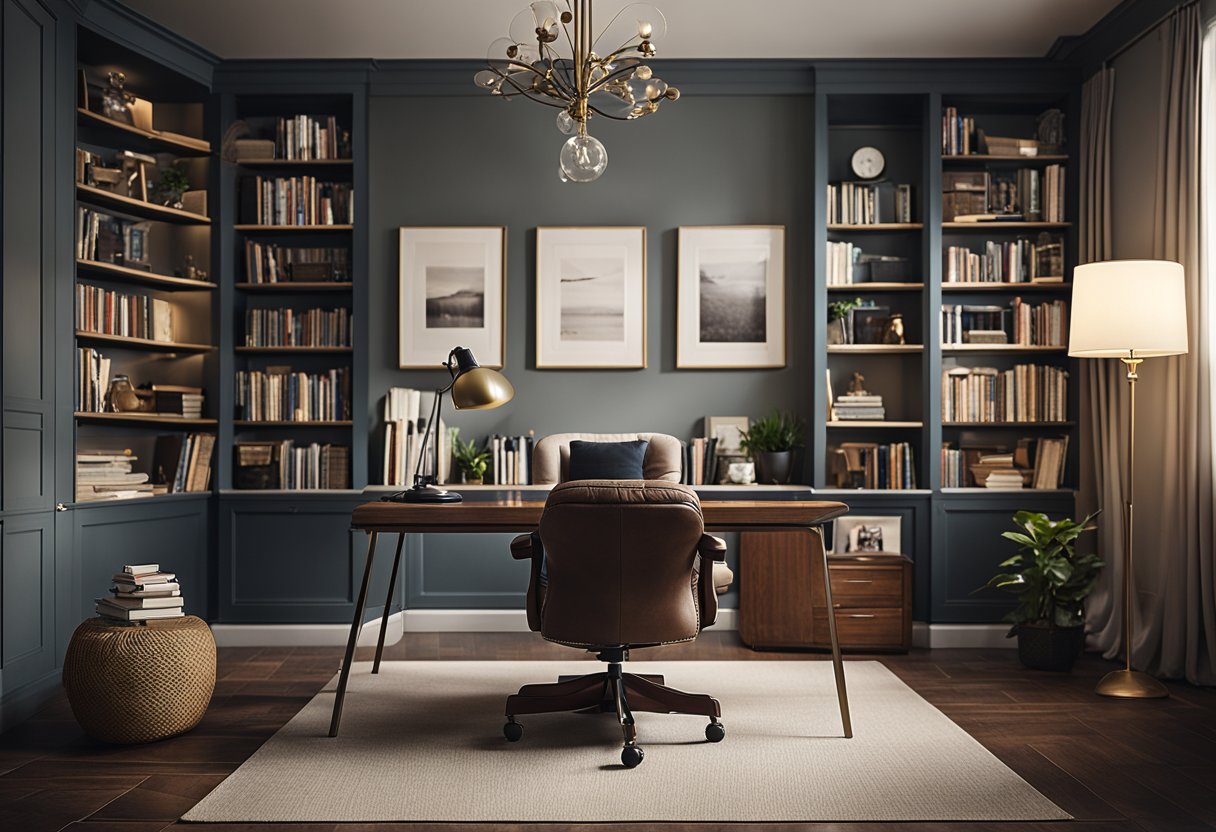
If you’re someone who works from home, having a designated home office space is essential to boost productivity. Creating a functional and comfortable workspace can help you stay focused and motivated throughout the day. Here are some tips for creating the perfect home office space:
Creating a Productive Home Office Space
- Choose a dedicated area: It’s important to have a designated area for your home office. This can be a separate room or a corner of a room. Make sure the area is quiet and free from distractions.
- Invest in a comfortable chair: You’ll be spending a lot of time sitting in your chair, so it’s important to choose one that’s comfortable and supportive. Look for a chair with adjustable height and backrest.
- Get the lighting right: Good lighting is essential for a productive workspace. Make sure your desk is positioned near a window to get natural light. Also, invest in a good desk lamp to provide additional lighting.
- Keep it organised: A cluttered workspace can be distracting and reduce productivity. Invest in some storage solutions such as shelves, drawers and filing cabinets to keep your workspace organised.
Designated Rest and Entertainment Zones
When designing your home, it’s important to have separate areas for work, rest and entertainment. Having a designated rest area can help you relax and recharge after a long day. Here are some tips for creating a functional rest area:
- Choose comfortable furniture: When choosing furniture for your rest area, look for pieces that are comfortable and supportive. A comfortable sofa or armchair can be a great addition to your rest area.
- Add some soft lighting: Soft lighting can create a relaxing atmosphere in your rest area. Look for lamps with warm bulbs or add some fairy lights to create a cosy ambiance.
- Include some entertainment: Adding some entertainment options such as a TV, books or board games can make your rest area a great place to unwind.
By following these tips, you can create a functional and comfortable home office space and designated rest area. Remember, having separate areas for work, rest and entertainment can help you maintain a healthy work-life balance.
Renovation and Transformation Tips
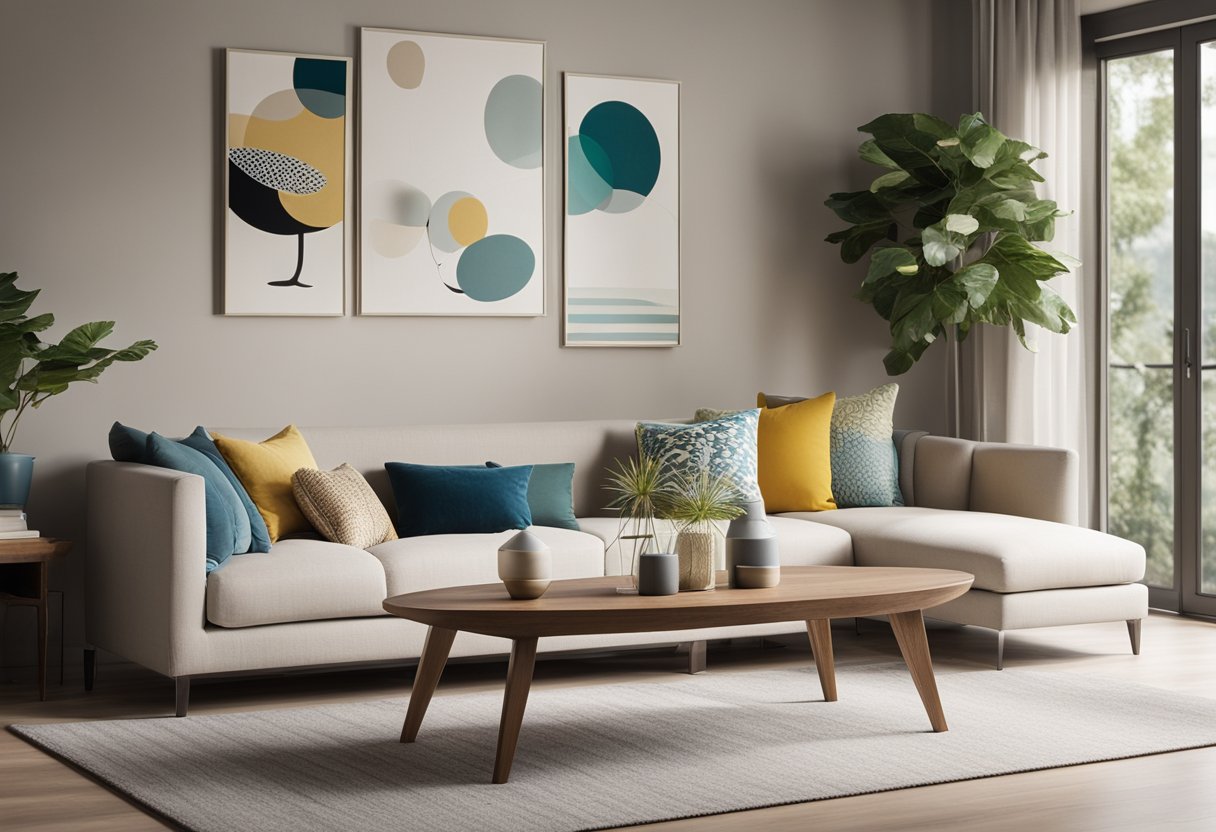
Planning and Executing a Renovation Project
Renovating your home can be an exciting and rewarding experience, but it can also be overwhelming and stressful. To ensure a successful renovation project, it is important to plan and execute it properly. Start by setting a budget and timeline for the project, and then determine what changes you would like to make. Consider hiring an interior designer to help you create a cohesive and functional design plan. Don’t forget to obtain any necessary permits and approvals before starting the renovation.
Budget-Friendly Design Upgrades
Renovating your home doesn’t have to break the bank. There are many budget-friendly design upgrades that can make a big impact. Consider painting your walls a fresh new colour, adding new light fixtures, or updating your window treatments. You can also give your furniture a new look by reupholstering it or adding new hardware. Don’t forget to shop around for deals and discounts on materials and furnishings.
Before and After: The Power of Transformation
The transformation of a space can be truly remarkable. Before starting your renovation project, take photos of the space to document the “before” look. This will give you a visual reference to compare the “after” look to. Don’t be afraid to take risks and try new things. A bold paint colour or unique piece of furniture can completely transform a room. Remember, the goal is to create a space that reflects your personal style and makes you feel happy and comfortable.
In summary, renovating your home can be an exciting and rewarding experience. By planning and executing the project properly, making budget-friendly design upgrades, and taking risks to transform your space, you can create a home that you love.
Accessorising and Finishing Touches
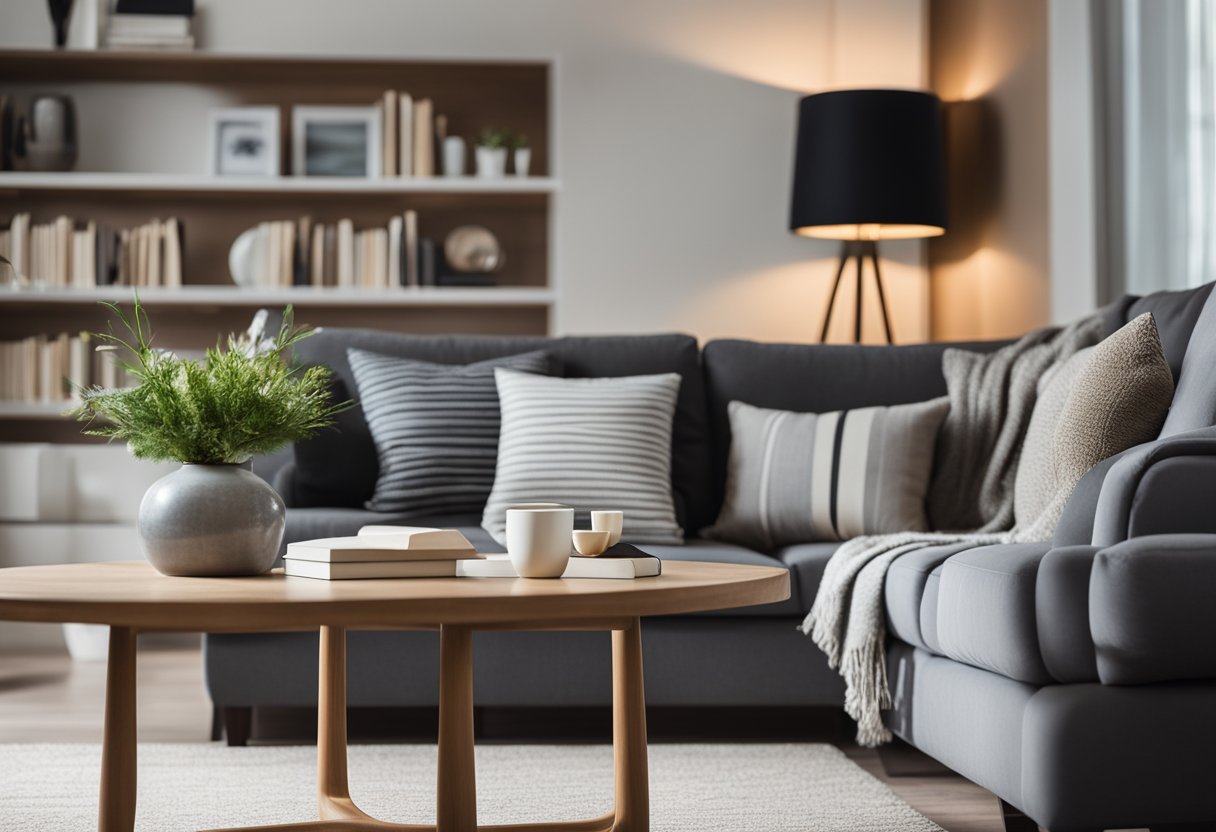
When it comes to interior design, accessorising and finishing touches are essential to bring a room together and make it feel complete. Here are some ideas to help you select the perfect finishing touches for your space.
Selecting Cushions, Rugs, and Throws
Cushions, rugs, and throws can add texture, colour, and comfort to a room. When selecting these items, consider the colours and patterns already present in the room. If your room is already busy, consider selecting cushions, rugs, and throws in solid colours to create a more calming effect. If your room is more minimalistic, you can add interest by selecting cushions, rugs, and throws with bold patterns and colours.
Bold Paint and Pops of Colour
Bold paint and pops of colour can add personality to a room. If you’re feeling daring, consider painting one wall a bold colour to create a focal point in the room. Alternatively, you can add pops of colour through accessories such as vases, artwork, or even a brightly coloured accent chair. When selecting colours, consider the mood you want to create. Warm colours such as reds and oranges can create a cosy atmosphere, while cool colours such as blues and greens can create a calming effect.
Minimalist vs. Bold Decor Choices
When it comes to selecting accessories, you can choose to go the minimalist route or opt for bold choices. If you prefer a more minimalistic look, consider selecting a few key pieces such as a statement vase or a unique sculpture. Alternatively, if you want to make a statement, consider selecting bold accessories such as a large piece of artwork or a brightly coloured rug. When selecting accessories, remember that less is often more, and it’s important to strike a balance between too much and too little.
In summary, accessorising and finishing touches are essential to bring a room together and make it feel complete. Whether you prefer a minimalist or bold look, selecting the right cushions, rugs, throws, paint colours, and accessories can help you achieve the perfect look for your space.
Frequently Asked Questions
How can I make my living room look more inviting with interior design?
Your living room is the heart of your home, and you want it to be a comfortable and welcoming space. One of the best ways to achieve this is by adding soft furnishings such as cushions, throws, and rugs. These not only add texture and warmth to the room but also make it feel more cosy and inviting.
Another way to make your living room more inviting is by adding some greenery. Plants not only add colour and life to the room but also help to purify the air. You can choose from a variety of indoor plants, such as succulents, ferns, and spider plants, depending on your preference and the amount of natural light in the room.
What are the top interior design themes for a modern home?
If you’re looking to give your home a modern and stylish look, there are several interior design themes that you can consider. Some of the most popular themes include minimalist, industrial, and Scandinavian.
A minimalist theme focuses on simplicity and functionality, with clean lines and a neutral colour palette. An industrial theme, on the other hand, features raw materials such as concrete, metal, and exposed brick, and often incorporates vintage or antique pieces. A Scandinavian theme is characterised by light colours, natural materials, and a cosy, hygge-inspired atmosphere.
What’s the best way to incorporate simple elegance in interior design?
If you’re looking to create a simple yet elegant interior design, start by choosing a neutral colour palette. Shades of white, beige, and grey are timeless and sophisticated, and provide a perfect backdrop for statement pieces such as artwork or furniture.
Another way to incorporate simple elegance is by using high-quality materials such as marble, brass, and natural wood. These materials not only look luxurious but also add texture and depth to the room.
How do I choose the perfect colour scheme for my bedroom’s interior design?
When choosing a colour scheme for your bedroom, consider the mood that you want to create. If you want a calm and relaxing space, choose cool colours such as blue, green, or lavender. If you want a warm and cosy atmosphere, opt for warmer colours such as yellow, orange, or red.
You can also use colour to create a focal point in the room. For example, you could paint one wall a bold colour, or choose a statement piece of furniture in a bright hue.
Can you suggest some clever interior design ideas for small spaces?
If you have a small space, there are several interior design ideas that can help you maximise the space and make it feel larger. One of the best ways to do this is by using multi-functional furniture, such as a sofa bed or a coffee table with storage.
Another clever idea is to use mirrors to create the illusion of space. A large mirror can make a room feel twice as big, and can also reflect natural light to brighten up the space.
What are the most popular interior design trends in the UK right now?
The interior design trends that are currently popular in the UK include natural materials, such as rattan and jute, and bold patterns and colours. Botanical prints and tropical themes are also popular, as well as vintage and retro-inspired pieces.
Another trend that is gaining popularity is sustainability and eco-friendliness. Many homeowners are opting for sustainable materials and products, such as recycled glass and reclaimed wood, to reduce their environmental impact.


